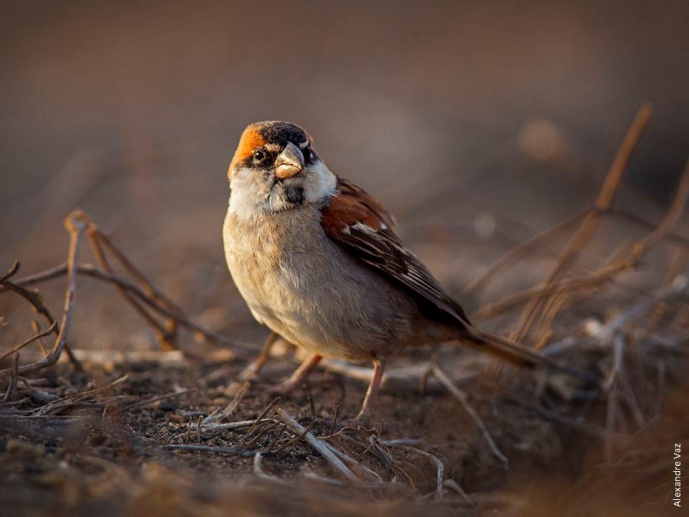SPARROW HOPPING

Alexandre Vaz, a photojournalist for the Portuguese edition of National Geographic, followed a team of four researchers - Augusto Faustino (ICBAS), Ângela Ribeiro (CIIMAR), Martim Melo and Pedro Cardia (CIBIO-InBIO) - on a fieldtrip to Cape Verde. Their quest was motivated by the search for a common bird, the Iago Sparrow (Passer iagoensis).
While, at a first glance, it may seem unusual to be looking for such a common species, this sparrow may turn out to be an excellent model to understand the process of speciation. In fact, there are several features that make this species an interesting model to study the first stages of the speciation process. First, this species is widespread and abundant on the Cape Verde archipelago, having at least 12 well-established allopatric populations. It is present in very distinct habits, allowing to study adaptation processes, and in islands and islets with distinct sizes and at distinct distances from each other, thus allowing to further test different colonization scenarios and test for the impact of the colonization process in the distribution of extant diversity. Additionally, the lago Sparrow is abundant on most of the islands of Cape Verde and relatively easy to sample.
In some islands, it occurs alongside the Spanish (Passer hispaniolensis) and House sparrows (Passer domesticus), providing an ideal model system for ecological studies. Furthermore, the Iago sparrow is easy to breed in captivity, making it ideal to test specific questions that cannot be suitably addressed in a natural set-up.
But what can we learn by studying these animals?
The link between environment, phenotype and genotype and its relation to speciation processes is one of the most interesting questions in biology. However, very few model systems are known that allow researchers to address this question. To overcome this problem, the team proposed to assess the potential of the Iago sparrow as a novel model taxon for the study of speciation in birds, and also to understand the mechanisms responsible for its adaptation to aridity. This last goal may be further achieved by comparing the Iago sparrow with the co-occurring Spanish sparrow, which is apparently less able to cope with arid conditions.
To answer these questions, the researchers ringed, photographed, measured several morphological traits and collected biological samples from a group of about 20 adults of Iago sparrow, with a similar sex ratio, for each sampling site. The color-ringed birds can be individually identified in the field, and will allow researchers to track their movements between distinct populations. Blood samples were taken for genetic analyses and to identify possible parasites affecting these species. For now, preliminary morphological analyses suggest the existence of slight anatomical differences between some populations, but the remaining analyses are currently on-going and the research team hopes to have interesting results soon. These results will help scientists determine i) when this species diverged from its continental sister species; ii) if there are significant differences among populations of different islands; and iii) which factors contributed to the diversity observed.
To know more about this topic, please read:
Salto de pardal | National Geographic | Jan 2015 (in Portuguese only)
Photos by Alexandre Vaz